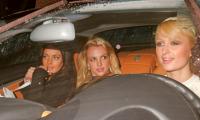Rawalpindi: The garrison town of Rawalpindi is fast changing its pre-partition facade, with old times looking in awe as centuries old buildings are being torn down to make way for ‘plazas’ and high rise buildings.
In the name of beautification some ugly and monstrous buildings and sculptures are being placed around the city. One exception as motorists slow down to glance at is a new sculpture on the British Raj era, Bank Road, placed between General Headquarters and Saint Pauls Church.
Made from metal the artist has painstakingly set up on a platform, a sculpture of a Pakistani soldier in battle fatigue and a little girl with a bouquet of flowers. Though the sculpture itself is in typical drab greyish black colour , the eye catching bouquet of flowers are bright orange, most probably made from plastic,
As the young girl offers the soldiers the flowers with both hands, he in turn is seen in the act of accepting the bouquet with his left hands while he lovingly pats her head with his right hand.
It is interesting that the young girl is wearing boots like the soldier and not normal girl wear shoes. The moment captured by the artist reflects the soft face of the Pakistan Army. It is also a reflection for the admiration that not only children who are safe today and are alive to see tomorrow is because of the bravery and sacrifices of these soldiers.
Next to this sculpture is another smaller one, with a soldier in action pointing his rifle towards the main GHQ gate. Hmm! Not to be lost in translation is the strategic location of GHQ, Headquarters of the Pakistan army which was set up in 1947 and which was previously the Northern Command Headquarters of the British Indian Army.
On the road opposite of GHQ is the grey structure of Saint Pauls Church with a brightly painted pink roof, constructed during the British era on the main Mall road. It is difficult to say which building is older, but the healthy picture of secularism is not lost in a Muslim state.
The ISPR despite attempts to contact did not reveal who is the artist behind the sculpture. Another colonial time building on the road opposite to GHQ is the landmark Flashman’s Hotel, where luminaries like Zulfiqar Ali Bhutto often visited.
It appears that it is the same artist who has created a beautiful sculpture in the serene settings of Ayub National Park, again a pre-partition park, as one enters the 2,300 acres of every kind of flora.
Again on a raised platform, sitting on a bench are a young boy and girl, both students reading from a book. This sculpture is older than the one on the Pindi Mall, and was a tribute to hundreds of students, teachers and others immediately after the gruesome killings 2014 attack on the Peshawar Army Public School.
One has seen visitors stopping for a moment to gaze at this outstanding sculpture, pondering over the day when young lives were snuffed out for ever. The two young students pondering over a school book also identifies with the grit and determination with which the surviving students and teachers returned to the school to continue with their education.
Missing today from the Mall Road, again in the vicinity of GHQ, is another colonial times statue, that of a crowned Queen Victoria in full royal trappings, which can be seen by the chosen few on the lawns of the British High Commission in Islamabad. “Malka Buth”, as it was commonly known was damaged in a demonstration, and wisely taken down by Rawalpindi’s PWD department for safe keeping.
This image shows a Rawalpindi Police official interacting with his juniors on November 30, 2023. —...
View of a China-Pakistan B2B Conference focusing on animal feed, fruit and vegetable processing industries hosted by...
Participants pose for a group photo at the First cohort of training in Islamabad on November 27, 2024. —...
CDA workers are cleaning an area following the PTI protest in Islamabad on November 27, 2024. — APPIslamabad :...
Muslim pilgrims circle the Kaaba as they pray at the Grand Mosque, during the annual haj pilgrimage in the holy city...
This representational image shows buses and other public transport vehicles filled with passengers. —...







